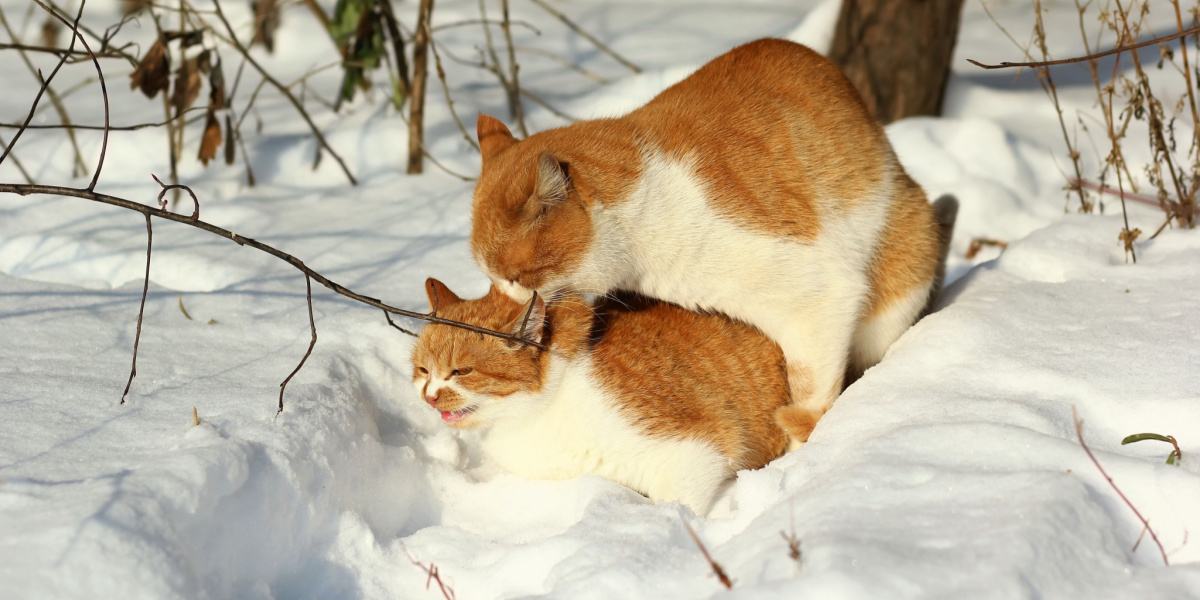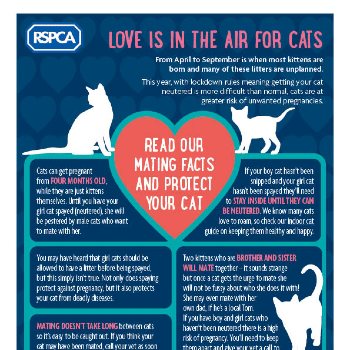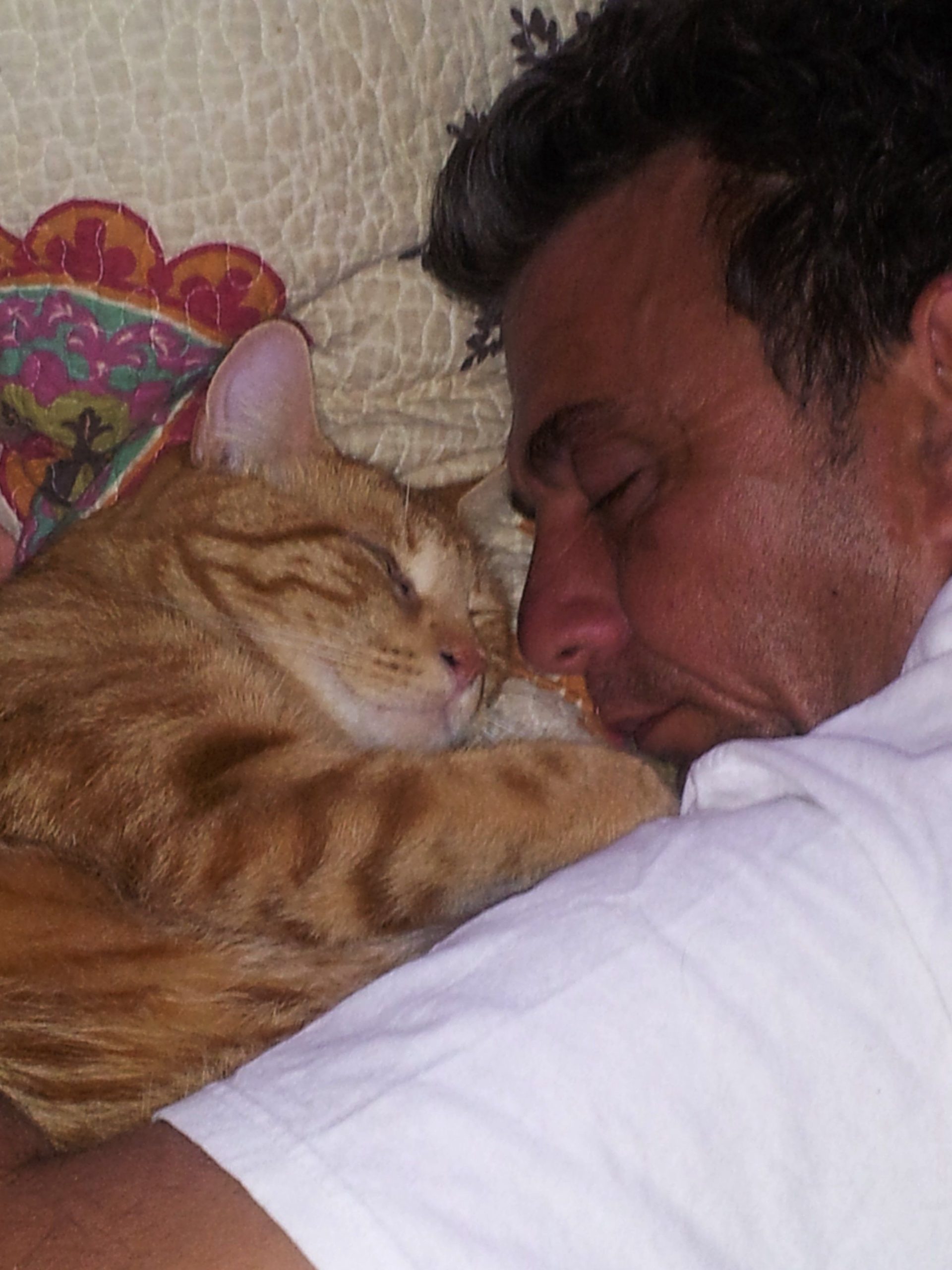Contents
- I. Introduction
- II. Understanding the Mating Behavior of Cats
- III. Signs that Indicate Your Cats Have Mated
- IV. Common Questions about Cat Mating
- 1. How do I know if my female cat is in heat?
- 2. Can cats mate with their siblings?
- 3. How long does the mating process take?
- 4. How often do cats go into heat?
- 5. Can a female cat get pregnant by multiple males?
- 6. How long is a cat’s gestation period?
- 7. What should I do if I suspect my cat has mated?
- 8. Can cats mate at any age?
- V. Preparing for the Arrival of Kittens
- VI. Taking Care of Pregnant Cats
I. Introduction
:strip_icc()/the-cat-mating-game-552391_v4-dabfffab635f4c0bad958505417544f3.png)
When you have cats at home, it is important to be aware of their behaviors and needs. One aspect that cat owners should be knowledgeable about is their mating habits. Understanding if your cats have mated can help you plan for potential litters or take necessary precautions to avoid unintended pregnancies.
In this article, we will explore the various signs and behaviors that indicate if your cats have mated. By knowing what to look for, you can ensure the well-being of your feline companions and make informed decisions about their reproductive health.
1. Changes in Behavior
After mating, cats may exhibit certain changes in behavior. Male cats may become more affectionate towards the female and display protective instincts. The female cat, on the other hand, may become more territorial and vocal. Pay close attention to any shifts in their usual patterns of behavior.
2. Physical Signs
Physical signs are often the most obvious indicators that mating has occurred. Female cats may show signs of estrus, such as increased vocalization and rolling on the floor. Additionally, you may notice bite marks on the back of the female’s neck, as this is a common behavior during mating.
3. Nesting Behavior
Female cats that have mated may exhibit nesting behavior as they prepare for the arrival of their kittens. They may start searching for a suitable place to give birth, such as hiding in closets or under furniture. Keep an eye out for any nesting behavior as it could be a sign that mating has taken place.
4. Changes in Appetite
Some cats may experience changes in appetite after mating. Pregnant cats often have increased food cravings, while others may lose interest in food altogether. Monitor your cat’s eating habits and consult with a veterinarian if you notice any significant changes.
5. Physical Examination
If you suspect that your cats have mated, it is advisable to have them examined by a veterinarian. A professional can perform a physical examination to determine if the female cat is pregnant. They may also recommend further tests or provide guidance on caring for pregnant cats.
By being observant and knowledgeable about the signs of mating in cats, you can ensure the well-being of your feline companions. Remember, if you have any concerns or questions about cat mating, it is always best to consult with a veterinarian for accurate information and guidance.
II. Understanding the Mating Behavior of Cats

Cats are fascinating creatures, and their mating behavior is no exception. In this section, we will delve deeper into the intricacies of how cats mate and what you should know about this natural process.
The Basics of Cat Mating
When it comes to cat mating, there are a few key factors to consider. Firstly, cats are known to be induced ovulators, which means that the act of mating stimulates ovulation in the female cat. Secondly, cats have a unique reproductive anatomy, with the male’s penis being covered in small, backward-facing barbs that help stimulate the female’s reproductive tract during intercourse.
Mating Rituals and Signals
Cats engage in a complex mating ritual that involves various signals and behaviors. Male cats often display aggressive behavior, such as yowling and fighting, to establish dominance and gain access to a receptive female. Female cats, on the other hand, may exhibit more subtle signs of readiness, including increased vocalization, restlessness, and a specific body posture called lordosis, where the rear end is raised and the tail is held to the side.
The Act of Mating
Once a female cat is ready to mate, she will assume the lordosis position, signaling her receptiveness to the male. The male will mount the female from behind, using his barbed penis to stimulate ovulation and ensure successful fertilization. The mating process can be brief but intense, with mating sessions often characterized by loud vocalizations from both cats.
If you suspect that your cats have mated, there are a few things to keep in mind. Firstly, female cats can become pregnant from a single mating, as they are induced ovulators. It’s important to be prepared for potential pregnancy and consider spaying or neutering your cats to prevent unwanted pregnancies. Additionally, mating can sometimes lead to injuries, especially if the cats are not compatible or if the male is too aggressive. It’s crucial to supervise mating sessions and intervene if necessary to ensure the safety and well-being of both cats.
Conclusion
Understanding the mating behavior of cats is essential for responsible pet ownership. By recognizing the signs and signals, as well as the unique aspects of cat reproduction, you can ensure the health and happiness of your feline companions.
III. Signs that Indicate Your Cats Have Mated
:strip_icc()/signs-your-cat-is-in-heat-552396_COLOR-294ca8f827f34cc382f82831abccabe6.jpg)
When it comes to your cats, it is essential to be aware of their reproductive behaviors and signs that indicate they have mated. Understanding these signs can help you ensure their health and well-being. Here are some key indicators that your cats have successfully mated:
1. Physical Changes
After mating, you may notice physical changes in both male and female cats. Female cats, also known as queens, may experience swollen nipples and an increase in abdominal size. Male cats, on the other hand, may exhibit a strong odor due to hormonal changes.
2. Behavioral Changes
Following mating, cats may display altered behaviors. Male cats might become more possessive and protective of the female, while the female may show restlessness and increased vocalization. Both cats may exhibit increased affection towards each other.
3. Decreased Appetite
It is common for cats to experience a temporary decrease in appetite after mating. This may be due to hormonal changes or the physical exertion associated with mating. However, if the decreased appetite persists beyond a few days, it is advisable to consult a veterinarian.
4. Nesting Behavior
Female cats may start displaying nesting behavior after mating. They may search for a secluded and comfortable spot to prepare for giving birth. You may notice them gathering soft materials such as blankets or towels to create a cozy environment.
5. Increased Sleepiness
After mating, cats may experience fatigue and increased sleepiness. The mating process can be physically demanding, and cats may require additional rest to recover. Ensure that they have a quiet, comfortable space where they can rest undisturbed.
While these are common signs that indicate your cats have mated, it is important to remember that individual cats may exhibit variations in behavior. If you have any concerns or questions about your cats’ reproductive health, it is always best to consult with a qualified veterinarian.
IV. Common Questions about Cat Mating

When it comes to cat mating, there are several common questions that cat owners often have. In this section, we will address some of these queries and provide informative answers:
1. How do I know if my female cat is in heat?
Female cats exhibit certain signs when they are in heat, including increased vocalization, restlessness, rubbing against objects, and a swollen rear end. They may also assume a mating position and exhibit a friendly and affectionate behavior towards male cats.
2. Can cats mate with their siblings?
Yes, cats can mate with their siblings, but it is generally not recommended due to the potential genetic disorders that can occur in the offspring. Breeding cats with unrelated mates is generally considered a better practice.
3. How long does the mating process take?
The actual act of mating between cats is usually quite brief, lasting only a few minutes. However, the entire process, including courtship and the female’s willingness to mate, can take several days.
4. How often do cats go into heat?
Female cats typically go into heat every two to three weeks during the mating season, which usually occurs between spring and fall. However, this can vary depending on factors such as the cat’s age, breed, and environmental conditions.
5. Can a female cat get pregnant by multiple males?
Yes, a female cat can become pregnant by multiple males during a single heat cycle. This is because cats are induced ovulators, meaning that ovulation occurs in response to mating. As a result, each mating can potentially fertilize a different set of eggs.
6. How long is a cat’s gestation period?
A cat’s gestation period, which refers to the time between conception and giving birth, typically lasts around 63 to 65 days. However, it can vary by a few days depending on various factors.
7. What should I do if I suspect my cat has mated?
If you suspect that your cat has mated and you do not want her to become pregnant, it is important to consult with a veterinarian as soon as possible. They can provide guidance on options such as spaying or terminating the pregnancy if it is still in the early stages.
8. Can cats mate at any age?
Cats can start mating as early as 4 to 6 months of age, depending on their breed and overall health. However, it is generally recommended to wait until they are at least 1 year old before allowing them to breed to ensure their physical and reproductive maturity.
Remember, understanding the mating behaviors and reproductive cycles of your cats is essential for responsible pet ownership. If you have further questions or concerns, it is always best to consult with a veterinarian who can provide expert advice tailored to your specific situation.
V. Preparing for the Arrival of Kittens

Welcoming a new litter of kittens into your home is an exciting and joyful experience. However, it’s important to make sure you are prepared for their arrival to ensure their health and safety. Here are some essential steps to take when preparing for the arrival of kittens:
1. Create a Safe and Comfortable Space
Before the kittens arrive, set up a dedicated space for them in your home. This area should be warm, quiet, and away from any potential hazards. Provide a cozy bed or a nesting box with soft bedding where the mother cat can nurse and care for her kittens.
2. Stock Up on Supplies
Gather all the necessary supplies for the kittens and their mother. This includes kitten formula, feeding bottles, a litter box, kitten-friendly litter, food bowls, and toys. Make sure to choose high-quality products that are safe for their delicate needs.
3. Consult with a Veterinarian
Before the kittens arrive, schedule a visit to the veterinarian. They will be able to provide essential advice on caring for newborn kittens and can perform a health check on the mother cat. The vet can also guide you on proper nutrition, vaccinations, and preventive care for the kittens.
4. Establish a Feeding Schedule
Kittens have specific nutritional needs, especially during their early stages of development. Consult with your veterinarian to determine the appropriate feeding schedule and diet for the kittens. It’s important to provide them with the right balance of nutrients to promote their growth and well-being.
5. Prepare for Socialization
Socialization is crucial for kittens to grow up as well-adjusted and friendly cats. Introduce the kittens to different sounds, smells, and experiences from a young age. Allow them to interact with gentle and positive human touch, which will help them develop trust and confidence.
6. Monitor the Health of the Kittens
Regularly monitor the health of the kittens and watch for any signs of illness or distress. Keep an eye on their weight, appetite, and bathroom habits. If you notice any abnormal behaviors or symptoms, contact your veterinarian immediately.
By taking these necessary steps to prepare for the arrival of kittens, you can ensure a smooth and positive experience for both the kittens and their mother. Remember to provide them with a loving and nurturing environment, and enjoy the precious moments of watching them grow and thrive.
VI. Taking Care of Pregnant Cats
When your cat becomes pregnant, it is important to provide her with the right care and support during this special time. Here are some tips to help you take care of your pregnant cat:
1. Provide a Comfortable Nesting Area
As your cat gets closer to giving birth, she will need a quiet and comfortable place to nest. Set up a cozy bed in a secluded area of your home where she can feel safe and secure.
2. Offer Nutritious Meals
Pregnant cats have increased nutritional needs, so it is important to feed them a high-quality, balanced diet. Consult with your veterinarian to determine the best food options for your cat during this time.
3. Ensure Plenty of Fresh Water
Make sure your pregnant cat has access to clean and fresh water at all times. Dehydration can lead to complications, so it is crucial to keep her hydrated throughout her pregnancy.
4. Monitor Weight Gain
Keep an eye on your cat’s weight during her pregnancy. A gradual weight gain is normal, but sudden or excessive weight gain could be a sign of complications. Consult your vet if you have any concerns.
5. Provide Regular Veterinary Care
Regular check-ups with your veterinarian are essential during your cat’s pregnancy. Your vet can monitor the health of your cat and her kittens, provide necessary vaccinations, and offer advice on care and nutrition.
6. Minimize Stress
Stress can negatively impact a pregnant cat, so try to minimize any unnecessary disturbances or changes in her environment. Keep loud noises and other potentially stressful situations to a minimum.
7. Prepare for the Birth
As your cat nears her due date, prepare a birthing area with clean towels or blankets. Familiarize yourself with the signs of labor so that you can provide the necessary support and assistance when the time comes.
8. Stay Alert for Complications
While most cats give birth without complications, it is important to be prepared for any potential issues. Educate yourself about common complications and know when to seek veterinary assistance.
By following these guidelines, you can ensure that your pregnant cat receives the care and support she needs during this special time in her life. Remember, if you have any concerns or questions, always consult with your veterinarian for professional advice.

Jackson is an accomplished content writer with a flair for captivating storytelling. With a Bachelor’s degree in English Literature from the prestigious University of California, Berkeley, Hunter’s educational background has honed his writing skills to perfection. His love for felines is evident in his extensive knowledge of cat behavior and care, making him an expert in the field. Hunter’s passion for cats has led him to contribute insightful articles to various online platforms, providing valuable information and tips to cat owners worldwide. With his exceptional writing abilities and deep understanding of cats, Hunter continues to create engaging content that resonates with readers and leaves a lasting impact.
